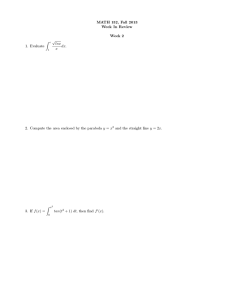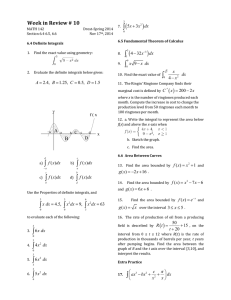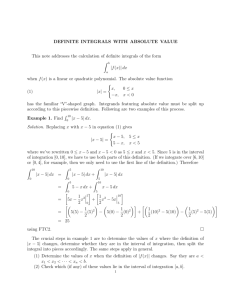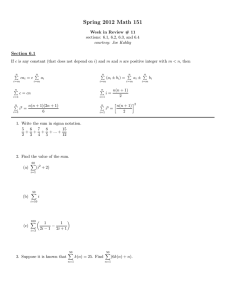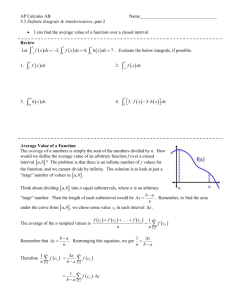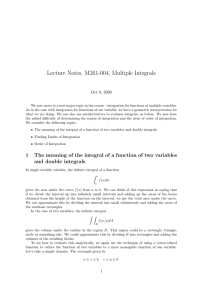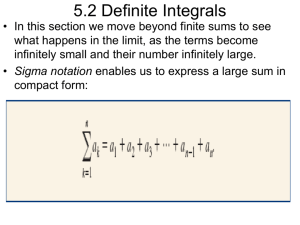NAME Rec. Instr., Time Signature Calculator CALCULUS I
advertisement
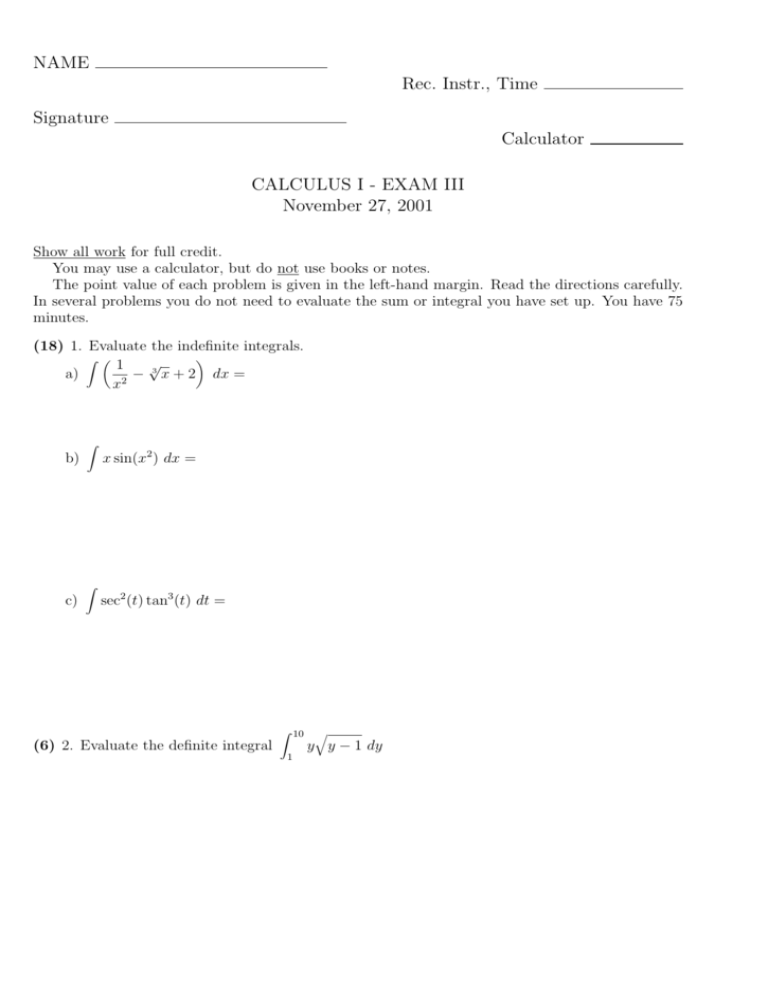
NAME Rec. Instr., Time Signature Calculator CALCULUS I - EXAM III November 27, 2001 Show all work for full credit. You may use a calculator, but do not use books or notes. The point value of each problem is given in the left-hand margin. Read the directions carefully. In several problems you do not need to evaluate the sum or integral you have set up. You have 75 minutes. (18) 1. Evaluate the indefinite integrals. Z √ 1 3 − x + 2 dx = a) x2 b) c) Z x sin(x2 ) dx = Z sec2 (t) tan3 (t) dt = (6) 2. Evaluate the definite integral Z 1 10 q y y − 1 dy page 2 of 4 (10) 3. Find the function y = f (x) satisfying the initial value problem: dy = x3 − x ; y(2) = 0 . dx (10) 4. a) Write the following sum in expanded notation but do not evaluate it. 4 X j=1 (−1)j j = 2j + 1 b) Write the following sum in summation (sigma) notation. 3 + 7 + 11 + 15 + 19 + . . . + 99 + 103 = (10) 5. a) Write out the Riemann sum ni=1 f (x∗i )∆x for f (x) = x2 on the interval [0,2] using a regular partition into n = 4 subintervals with the chosen point x∗i in the ith interval taken as the midpoint. (Do not evaluate the sum.) P b) Write a definite integral that the Riemann sum in part (a) approximates, and evaluate the definite integral (any way you like). page 3 of 4 (6) 6. Find the average value of the function cos(x/2) over the interval [0, π/2] . (10) 7. A particle starting at the origin moves along the x-axis with velocity given by v(t) = dx dt = 2t − 6 . a) In what direction is the particle heading at time t = 0 ? b) At what time(s) does the particle come to a stop? c) Where is the particle at time t = 5 ? d) What is the total distance that the particle travels over the time interval [0, 5] ? (10) 8. Sketch the region bounded by the curves y = x2 − 3x , y − 2x − 6 = 0 , and set up an integral representing the area of the region. Do not evaluate the integral. page 4 of 4 (10) 9. Below is a sketch of the region bounded by the curve y = sin x and the x-axis over the interval [0, π] . Set up integrals for the following volumes but do not evaluate the integrals. y 6 ' $ 1 π x a) The volume of the solid obtained by rotating the region around the x-axis . b) The volume of the solid obtained by rotating the region around the horizontal line y = 1 . (10) 10. Let g(x) = 0x f (t)dt where f (x) is the function graphed at left below. Sketch the graph of g(x) over the interval [0,3] at right and find the following. R a) f 0 (2) = y b) g(1) = c) g(3) = 6 d) g 0 (2) = y 6 2 2 (1, 1) • 1 • 1 @ @ @ 1 - 2@ 3 @ −1 @ @• (3, −1) 4 x 1 2 3 x

